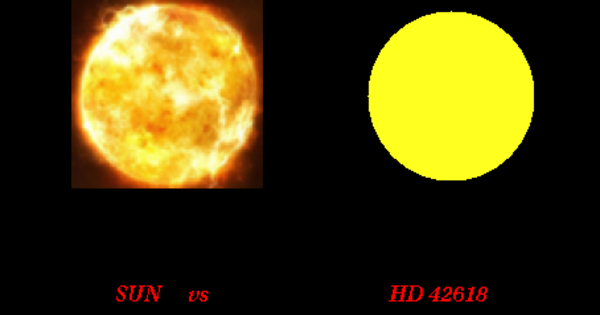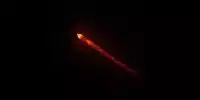HD 42618 is a well-studied star in the equatorial constellation of Orion with an exoplanetary companion. The star is approximately 76.6 light-years (23.5 pc) away from our Solar System. With an apparent visual magnitude of 6.85, it is too faint to be seen with the naked eye. When compared to our Sun, it is 1.0 times more massive and 1.0 times larger.
The star HD 42618 has an apparent magnitude of 6.8 and an absolute magnitude of 5.0. Based on parallax measurements, this system is 79.6 light years from the Sun. It has a relatively high proper motion, traversing the celestial sphere at an angular rate of 0.321′′ per year. HD 42618 is drifting closer with a radial velocity of −53.5 km/s and is predicted to come as near as 42.6 light-years in around 297,000 years.
The star HD 42618 is a Main Sequence Star. It is not part of the Orion constellation outline, but it is within its boundaries. The color of HD 42618 is yellow based on the star’s spectral type (G4V). According to the most recent Hipparcos data from 2007, HD 42618 is 76.65 light years away from Earth. The surface temperature is 5727 degrees Celsius, and the spectral type is G4V. The number of extrasolar planets is one. HD 42618 b has a radius of 0.213771, a mass of 0.045300, and an orbital distance of 0.554000.
The radius of HD 42618 has been calculated to be 0.93 times that of the Sun. The radius of the Sun is 695,800km, so the radius of the star is estimated to be 644,536.91km. It has a solar mass that is 1.02 times that of our Sun. To give you an idea of scale, the Sun is 99.86% of the mass of the solar system. The metallicity of the star is -0.090000, which is the fraction of the star that is not Hydrogen (X) or Helium (Y). An older star has a high metallicity, whereas a new star has a low one.

The apparent magnitude of HD 42618 is 6.85, which is a measure of the star’s brightness as seen from Earth. Visual Magnitude is another name for Apparent Magnitude. If you use the 1997 Parallax value, the absolute magnitude of HD 42618 is 5.03. If you use the 2007 Parallax value, the absolute magnitude of HD 42618 is 4.99.
HD 42618’s stellar classification is G4V, indicating that it is a typical G-type main-sequence star. It is considered a close solar analog, which means that its physical properties are very similar to those of the Sun. With an estimated age of 5.5 billion years, seismic models indicate that the star is older and more evolved than the Sun.
It is spinning at a low projected rotational velocity of 1.8 km/s, with a rotation rate consistent with the star’s low activity level. The star has 92 percent of the mass of the Sun and 94 percent of the radius of the Sun. The surface metallicity is lower than that of the Sun, and the abundance patterns are consistent with a solar-type star. At an effective temperature of 5,765 K, HD 42618 emits 92 percent of the Sun’s luminosity from its photosphere.
The discovery of a candidate exoplanet companion orbiting HD 42618 was announced in 2016. HD 42618 b was discovered using the radial velocity method and has a periodicity of 149.6 days. The orbital elements have the planet orbiting at a distance of 0.55 AU from the host star with an orbital eccentricity (ovalness) of 0.2 and a Neptune-like mass. A second signal with a period of 388 days was detected, but this is unconfirmed and may be false. A 4,850 day signal is likely the result of star’s magnetic activity cycle.
















